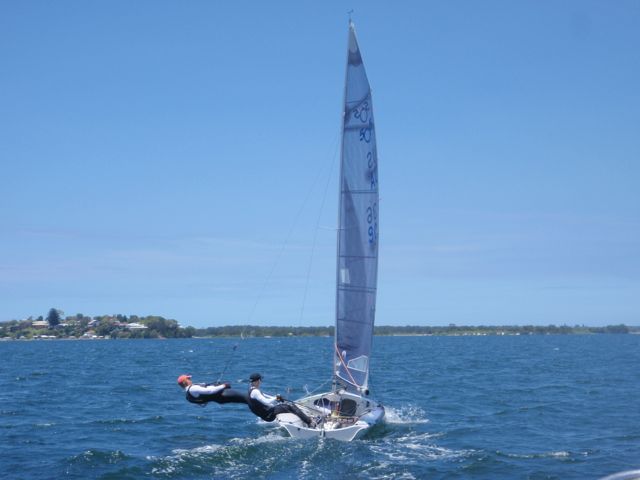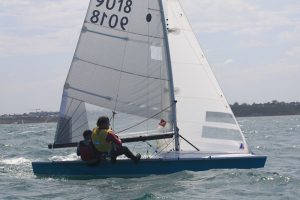
thethe 
Coaches all around the world preach If You Sail Your Boat Flat You Will Be Fast
This article was written by super coach ADRIAN FINGLAS during his time as Head of Coaching at Royal Brighton Yacht Club.
We have all heard the old saying flat is fast, once the boat is powered up and sailing upwind the flatter you can sail your boat the faster it will go.
A common sight from dinghy to one design keelboats is often the winning teams will always have the flattest sail set up and the least angle of heel.
When I watch a world-class Etchells fleet race from my coach boat it’s always interesting. The least heeled over are the fast guys.
Sail small dinghies extremely flat. The best teams practice for hours just perfecting keeping that exact angle of heel perfect. Steering and mainsheet trim are the two controls you constantly need to change in small boats.
Major Controls for keeping your boat flat
We have many different controls that can assist in keeping the boat flat and they all have different effects.
The control that’s the most overlooked is steering accurately with the power you have. Steering is a primary control and generally, it has the biggest effect on power.
Steering closer to the wind fixes being overpowered and heeling too much in a dinghy or a yacht. Luffing the jib slightly and reducing the power and angle of heel. A yacht or a dinghy that heels over makes considerable leeway compared to a yacht that is sailed flat.
We can be losing so much distance and speed to our opponents if we are heeling too much. In the stronger breeze, it is not uncommon to see the top helms luffing the first 6 to 8 inches of the jib as they sail upwind. This is keeping the power and angle of heel under control.
A boat set up poorly with too much power can be like a bucking horse – very difficult to control. A common mistake made in most setups is too much sail depth.
When you look at sails from onboard your boat, they always look much flatter than they are. Get off the boat and look from behind. You will be surprised how deep they are.
Keeping a Big Boat Flat
Secondary controls must be pulled on very hard to stretch the sails flat to reduce power. Listed below in order of importance to reduce power on a big boat.
- Backstay on
- Traveller down
- Outhaul on hard lower mainsail shape must be flat
- Cunningham on hard to hold the draft position in the sail forward of 50%
- Jib cars aft making the jib flat in the bottom third
- Jib halyard on hard, no wrinkles, this holds the draft position forward in the flying shape
- The vang in a dinghy to yacht has radically different outcomes. The vang has much more effect on the dinghy rig when compared to a yacht rig.
A sail is a soft flying wing so holding the flying shape in the correct position with your controls is the key.
I have an old saying – except for very light winds wrinkles are slow. Keep the sails smooth, we don’t see planes flying around with bumps on their wings.

